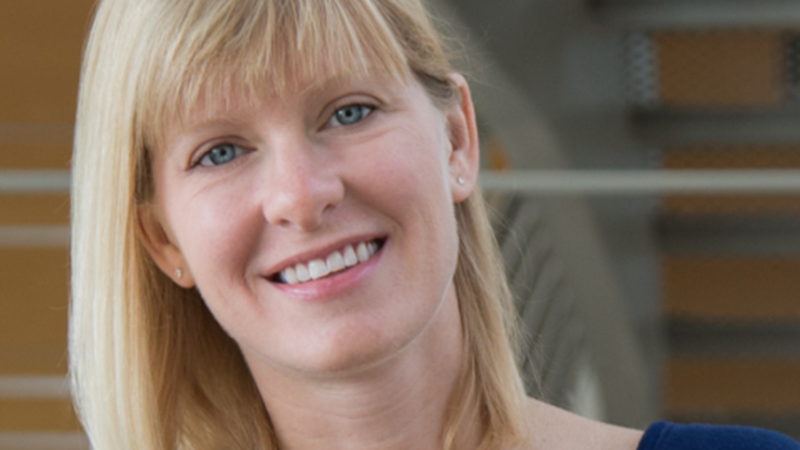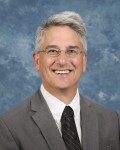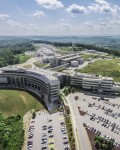Nearly 20 years ago, Sarah Cousineau was a postdoc routinely taking a shift in the control room at the newly constructed Spallation Neutron Source at Oak Ridge National Laboratory. She was sitting in the “driver’s seat” at the console while monitoring the SNS systems. Then, as she tells it, “some important people walked into the room, including Norbert Holtkamp, the division director.”
“They were there to initiate sending the very first beam pulse through the recently completed drift tube section of the linear accelerator,” said Cousineau. “Someone asked Norbert if he wanted to push the button, but he insisted that since it was my assigned shift, I should push the button.”
Cousineau gratefully obliged and said, “The image of the tiny beam current signal at the other end of the drift tube will stay with me forever.”
Now, two decades later, Cousineau has officially assumed the position of director of the Research Accelerator Division for the Neutron Sciences Directorate—the same role held by Holtkamp on that memorable day.
In her first week as division director, Cousineau held an all-hands meeting for the approximate 200-person RAD staff during which she laid out her vision for herself and her team.
“RAD’s mission remains that we need to be ready to provide a total of 2.8 megawatts between two target stations by the time the Second Target Station is completed within the next 10 years or so,” said Cousineau. “Twenty years ago, we set the world standard for one-megawatt operations and now we’re in the process of doubling that beam power with a much older facility and needing to reliably operate double the number of target stations. It’s a daunting task, but there’s no better team on the planet to make this happen and our past successes show we can do it.”
ORNL is moving forward with plans for a major upgrade to the SNS to add a Second Target Station to address emerging science challenges. The capabilities of the STS will complement those of the SNS First Target Station and the High Flux Isotope Reactor, ORNL’s reactor-based source of neutrons, by filling gaps in materials research that require the combined use of intense, cold (longer wavelength) neutrons and instruments that are optimized for exploring complex materials. Together, the three facilities will form an unbeatable combination that will maintain US global leadership in neutron science capabilities.
Paving the way for the STS was an upgrade to the linear accelerator’s proton power systems, which was completed earlier in 2025 to accommodate the science community’s demand for increased capabilities. John Galambos was the director for the Proton Power Upgrade project and is now the interim-Associate Laboratory Director for the Neutron Sciences Directorate. “I’ve worked closely with Sarah since she started at ORNL 22 years ago, and I am highly confident in her ability to lead RAD as we move forward. Sarah is good at assessing a complicated situation and distilling what’s important, and she understands the importance of looking at things from the perspective of each individual she works with.”
Cousineau is already scheduling one-on-one meetings with each of the employees on her staff. “I want people to feel comfortable with me being in the same room with them, whether we’re out on the beamline or just sharing ideas over a cup of coffee in my office.”
Outgoing RAD director, Fulvia Pilat, feels strongly that she is leaving the division in excellent hands after her own time in the position. ““It has been a privilege to lead RAD during the past 8 years. SNS has made excellent progress and is now performing with high reliability and high power, thanks to the effort and dedication of the RAD staff. I am confident that Sarah will continue to successfully lead the SNS toward new achievements”.
Previously, Cousineau served as RAD’s section head for accelerator science and technology where she led the accelerator physics, beam instrumentation, and mechanical engineering groups to support the high-power, high-reliability operation of the SNS. She also oversaw the SNS research program focused on advancing beam physics and beam instrumentation for high-power hadron beams.
Cousineau attended graduate school at Indiana University where she conducted research on high intensity accelerators at the Indiana University Cooler Injector Synchrotron, the Los Alamos National Laboratory Proton Storage Ring, and the ORNL SNS Accumulator ring, which was being designed at that time. After receiving her PhD, she joined Oak Ridge National Laboratory in 2003.
Cousineau is active in the accelerator community and has served as chair for the American Physical Society Division of Physics of Beams, and as a faculty member and the curriculum chair for the US Particle Accelerator School—the primary educational institution in the field of accelerator physics. In 2020, Sarah was elected as a Fellow of the American Physical Society.
Her research throughout her career has included the collective effects in beams including space charge and instabilities, high power beam collimation, novel beam instrumentation and diagnostic methods, charge exchange injection methods, and general high intensity beam dynamics.
“I have a lot of people, both managers and peers, to thank for their support and guidance during my career here at ORNL. They’ve made this a place I always wanted to come back to. I want to help maintain SNS as the world’s leading center for neutron research. I’m confident we can remain the leader in high-power operations for decades to come.”
- Paul Boisvert







